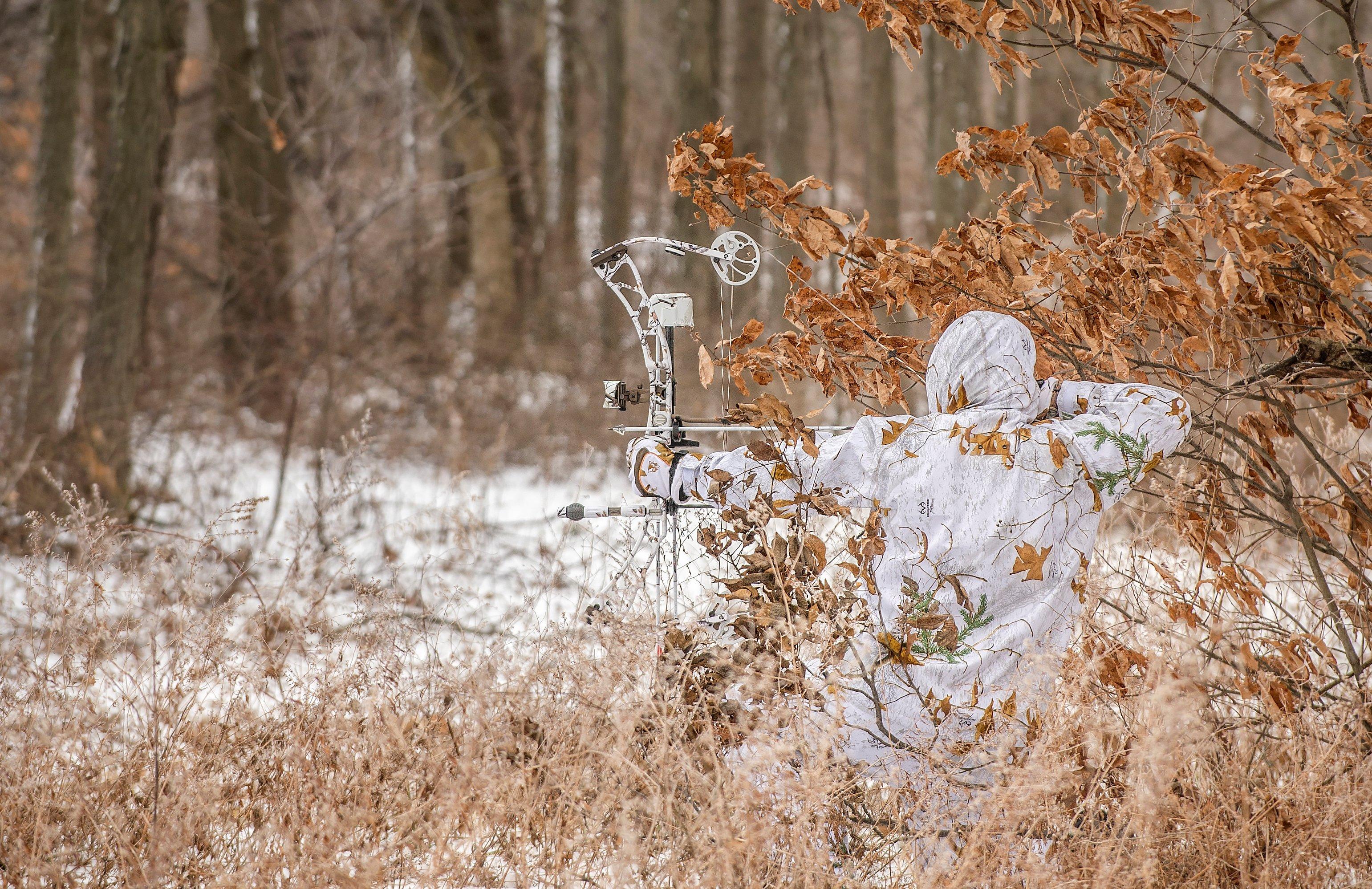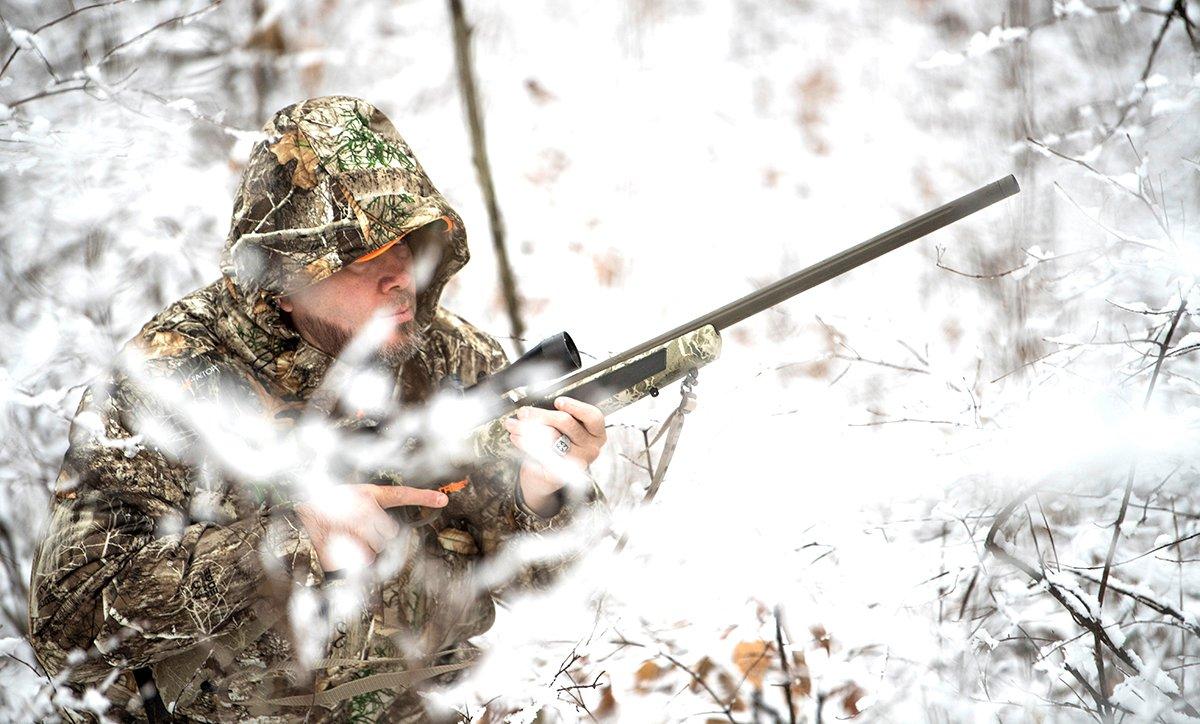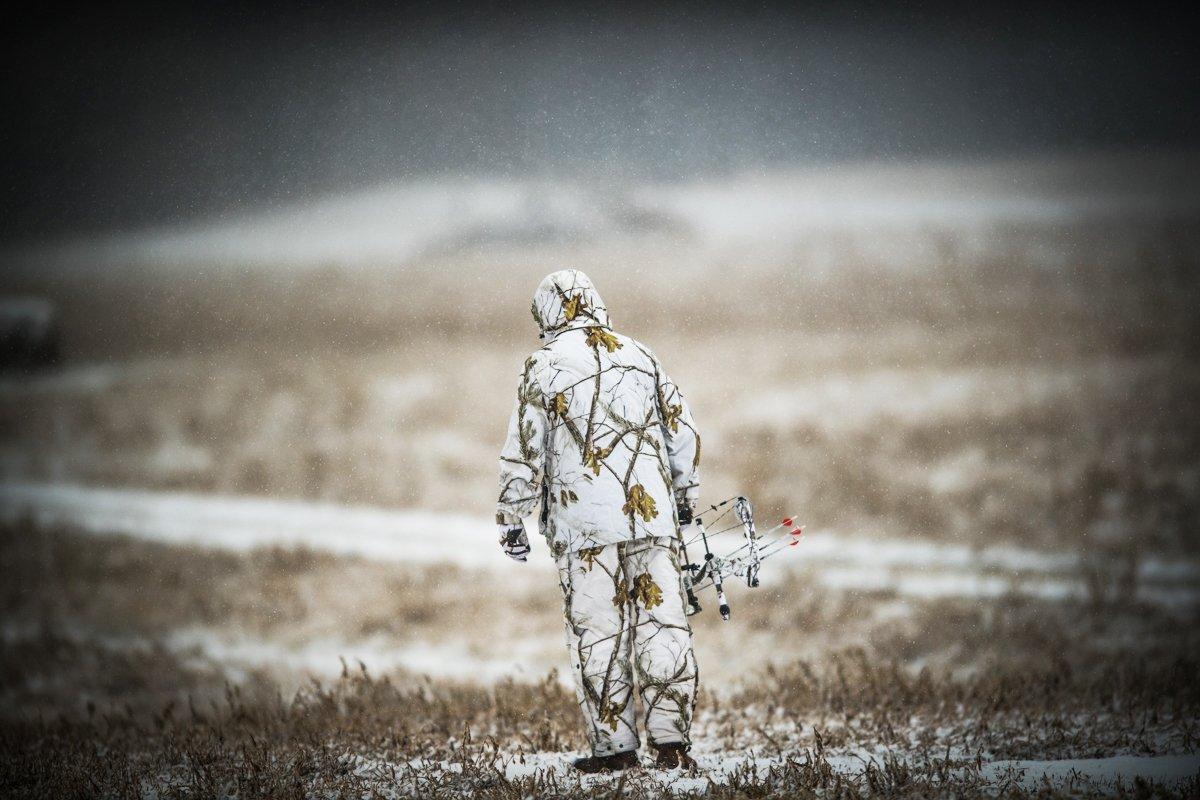If you're stilling hanging onto your buck tag when the rut ends, you'll face some steep challenges but have advantages, too. Here are the pros and cons.
The big buck ambled through the snow-laden hayfield 180 degrees behind me. I was sitting on the ground overlooking a river bottom that wraps around the field edge with my muzzleloader on my lap when I craned left and saw tines. Unfortunately, several deer were between me and the bruiser buck, and the evening was so calm that every move almost sounded like shattering glass. You guessed it. I was unable to maneuver into position and kill the buck. It sucked.
I've done lots of late-season hunting with archery and muzzleloading equipment and have encountered some really nice deer. However, I've also frozen my butt off more times than I care to remember. I've killed late-season bucks, but I've also eaten many deer tags.
It goes without saying that challenges mount when the rut turns to the post-rut, which can make filling a buck tag, at times, just shy of impossible. However, one thing's for sure: I cannot fill my buck tag if I'm not out there. Neither can you.
If you set out after a late-season buck this year, here are some of the challenges you'll face. But I'll also outline some advantages that you might not have considered. Let's review.
Pressure
The beginning of the late season — the time immediately after the rut — can be extremely difficult for deer hunters. Deer are incredibly edgy, as they've just faced the highest concentration of hunting pressure for the year. Just because the guns finally quit blazing doesn't mean bucks will waltz out in daylight. No, most bucks keep a low profile, and putting eyes on one is about as probable as seeing Bigfoot.
However, if you wait for a couple of weeks or more, deer often sense that pressure has dissipated. During this part of the season, there are fewer hunters (in most areas) afield than at any other time. In some cases, you might be the only one hunting within a square mile or more. For a patient hunter who picks and chooses the right times and winds to hunt, the lack of hunting pressure can be hugely advantageous, and the ball is in your court.
(Don't Miss: The Mentality of Big-Buck Killers)
Weather
Weather can make or break late-season hunting. Unseasonably warm temperatures during December and January give deer little reason to feed during early afternoon. So, even if you have a hot corn or bean field, you might see few deer during daylight, which can frustrate to no end.
Turn the tables to a wintery onslaught and deer are likely to feed heavily before, during, and after the major weather event. Late-season cold fronts are worth watching and can put a buck on his feet in daylight. You'll want to buckle down over food when a weather event is incoming.
Cold weather can move deer, but the other side of the coin is that hunting in the cold for several hours is tough, especially for bowhunters in treestands or ground blinds without climate control. Muscles become stiff during long hours of inactivity. Then when a buck steps out, the effects of adrenaline are amplified, and the shakes can manifest themselves in your body. Years ago, when I was a young deer hunter, I became so cold one late afternoon that I couldn't draw my bow when a big buck stepped out beneath my stand 20 yards away.
Of course, you must dress for the weather. But that doesn't make things easy. The more clothing you add, the more difficult it becomes to draw a bow and shoot with the proper form. The lesson: Practice shooting in the clothes you'll wear.
Snap, crackle, and pop aren't just sounds you hear from your Rice Krispies. Some treestands, climbing sticks, and even permanent stands are susceptible to such noises with any movement you make, and that can alert already-edgy deer. That's something you can't always help, and it's a reason that late-season hunting sucks.
(Don't Miss: Off-the-Wall Whitetail Tactics)
Food
It's common knowledge that bucks worn to the bone from chasing does during the rut must buckle down on food sources to survive winter. In other words, they experience the undeniable need to feed. The problem is that many food sources have been depleted by that point in the season. And if the area you hunt has no late-season food sources, you'll see few, if any, deer. That makes for some long, cold, and disappointing sits.
On the other hand, if the property you hunt has a standing corn or bean field, you can expect some deer to frequent the field, potentially during daylight. Basically, if you have food, you're in the game until time runs out. If you don't, you need to add food via baiting (where legal) or beg for hunting permission where there is a late-season food source.
(Don't Miss: How to Age Bucks on the Hoof)
Access
Because late-season hunting is almost all about food, we can't ignore the potential challenges of hunting over a food source. Obviously, you're hoping to catch a buck coming to feed for the last half-hour of daylight. That means that you risk having deer in the field when legal shooting light fades. How are you going to exit the area without sending every deer in the field running and snorting? It's a difficult reality of hunting deer over a food source, especially during late season.
Muzzleloader hunters sitting 150 yards away from where most deer are feeding have the advantage of some distance, but bowhunters set up for 20- to 30-yard shots where deer are feeding are practically on top of the deer. The least risky option is to have someone drive into the field with a truck or tractor (if possible and available) and pick you up. Even that has risks, but at least deer will be a distance away as you descend from the tree and hitch a ride out.
This isn't always an option, though, especially if you're hunting public lands. A couple of times when I was covered up in deer at the end of legal shooting light, I snorted like a deer or howled like a coyote to get deer to clear out without introducing human sounds and scents. I hated doing it, but I believed I had no other choice.
(Don't Miss: You Shot a Deer. Here's How to Find It.)
Broken Antlers
This aspect just plain sucks. Bucks fight viciously during the rut, and the aftermath often entails broken headgear. The neat flyer points on the big nontypical you've been watching on your trail cameras or the once-long brow tines on that giant 8-pointer are now busted off. You must decide: Will you hunt for your target buck or look for another one that hasn't broken his rack?
When aspects of a buck's antlers that made him unique go missing, you lose some of your connection with that deer. In severe cases, a buck might be missing an entire side from fighting, and even if he's fully mature, he no longer flaunts the glory he did all summer and through early fall. But broken antlers are a reality of late-season hunting.
(Don't Miss: The Path to Amazing Venison)
It Is What You Make It
Some aspects of late season certainly suck, but some aspects make it great, too. You can whine and complain about the downsides of late-season hunting, or you can keep a positive attitude, put in every effort you can muster, and focus on the few advantages late-season hunting has over the early season and rut. Try to make the best of it, and remember the only way you'll punch your tag is by being out there.












